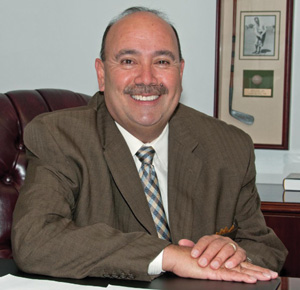Managing Maintenance Fees – Resort Management Gets Creative
There’s no getting around it: the annual assessment is no one’s favorite part of being a timeshare owner. In fact, in a 2014 ARDA International Foundation study, 71 percent of timeshare owners surveyed agreed that their maintenance fee was too high. While a lot of businesses have found a cheap way to outsource their facility management, a lot have yet to find the best solution for their building. It just shows how important it is to find the right people to keep maintenance fees down (The same study found the average fee in 2013 was $845.). Maintenance fees cover the cost of things like hiring austin roofing companies when roof repairs are needed, or having siding replaced and plumbing repairs carried out; general property maintenance to ensure the longevity of the building.
I know that no one ever says any fee is too low, but when resorts can’t pay for needed improvements and the resort experience deteriorates, no one’s happy. The challenge facing resort managers today is finding the right balance. They need to have the money to keep their properties in top condition while keeping assessments manageable. They need to include the necessities for a great vacation, but charge for “extras.”
Related: Maintenance Fee Musts: Ten Rules for Prompt Payment
One increasingly important revenue source is rentals, which provided 17 percent of resort revenue in 2013, having grown $1.6 billion in 2012 to more than $1.8 billion in 2013. When charged for on-site services or even resort fees, renters represent an even stronger revenue potential. However, a successful resort experience means renters are top prospects for sales, and the success of that visit may be impacted if they feel they were constantly reaching for their wallets. Still, some renters believe there are perks to renting instead of owning property, you can see an example in this NovaCredit.com article. You can also check out, Resort Trades checks in with some top talents for tips on walking the tightrope.

Dale Goodman, RRP, CHA, president of Newport News, Va.-based Goodmanagement, advises that resorts start with the basics: making sure owners pay their assessments. “Collect every nickel,” he says. “If owners don’t pay, find a way to maximize the value of delinquent and association-owned inventory through rentals.”
Because Goodmanagement serves many different homeowners associations, they don’t have one set rule for what’s included with each unit. “The resorts set the standard,” he says. “We think it’s best to have enough coffee and toilet paper to get guests through the first night before they have time to go to the grocery store.”
It doesn’t pay to be too stingy. “If you don’t supply enough silverware and dishes, they’ll have to run the dishwasher more often, which adds to the utility bills and wear and tear.”
When it comes to renters, Goodman says, “The best surprise is no surprise. If they’re unhappy, they’ll put that on TripAdvisor, and that hurts your rental program.”
Lori Entwistle, managing agent, and general manager at Scottsdale (Ariz.) Camelback Resort, agrees with that idea, saying, “We make a big deal of the fact that there’s no resort fee. We’re like Southwest, where they advertise that your bags fly free. Our rental guests really respond to that.”
A key part of the mix at her resort is generating revenue through on-site services, which include a spa, food and beverage services, and booking activities, such as hot air balloon rides. The basics, though, including a new miniature golf course, are free for everyone. For those who need equipment, the resort sells a “Club Card” for $3 a day or $10 a week that covers the rental of tennis racquets, putters, and other sporting goods. “People don’t expect extra services like spa visits to be included,” Entwistle says. “Our share of the revenue is income for the association so everyone benefits from having the spa, even if they don’t use it.”

Renters, exchange guests, and owners alike receive a starter pack of shampoo, kitchen supplies, and coffee to cover the first night. “We treat everyone the same.”
When deciding what to charge extra for, Bill Young, president, and CEO of SPM Resorts Inc., a Myrtle Beach, S.C.-based management company, lets the board at each resort make the call. “This depends on the amenity and resort,” he says. “If the resort installs a major attraction, such as the Fantasy Surf at Vacation Villas at FantasyWorld in Kissimmee, management and the board analyze the market and the value of the attraction to determine a price, as well as discounts for guests and owners.”
While on-site services and amenities are helpful in controlling annual assessments, Young believes it all starts with good management. “Proper planning, scheduling, and budgeting is the key to keeping maintenance fees low while maintaining resort quality,” he says. If you’re unsure of how to schedule correctly then check out this Road to Reliability article. “We’ve been extremely successful at reducing expenses and generating income to keep maintenance fees low and to make up for delinquent accounts, so we can reduce the burden on dues-paying owners. Many of our resorts are on budgeting and refurbishment cycles that allow their associations to upgrade common areas and units on an annual basis while keeping maintenance fees stable and building reserves. That’s the goal of our budgeting process.”
Some SPM-managed resorts do charge resort fees, but again that’s a matter for each board to decide, based on demand and market conditions. “Our marketing and revenue management teams work hard to position our properties to attract rental guests who we hope will become repeat visitors and eventually purchase.”
Debbie Ely has managed to turn the rentals program at Blue Water Resort in Nassau, Bahamas, into a true profit center-raising the annual rental revenue from $80,000 to $820,000 in just one year. The resort accomplished this by updating its website, selecting one employee to manage online inventory, and opening up the resort on major channels like Expedia and booking.com.
“Don’t underestimate the importance of your website,” she advises. “New photographs of the property and videos paint the picture for the prospective renter, so look your best. One of our biggest advantages over a hotel is our space and kitchens, so show them off. Stage the dining areas with plates and simple food; fire up the BBQ to capture the togetherness a vacation can bring.”
Resorts should have a mechanism in place to respond immediately to inquiries. “When shoppers are looking online they want to book now because they’re excited about traveling,” she says. “Online chat features are easy to install and the quickest way to communicate.”
Another good option for resorts that have larger sleeping capacities is to base published rates on Quad Occupancy. “This means publish a nightly rate based on up to four guests. If more than four are traveling, we charge $35 per person per night for over four guests.”
While on-site, these guests generate additional revenue through charges for Wi-Fi access, DVD rentals (Redbox), vending machines, sports equipment rentals, and referral partnerships.
They also pay a resort fee. “I think this is a great way to bring in additional income to the property. Last year, we collected $198,900 in resort fees from renters, which is impressive for a 35-villa resort.” (Ten Tips for a Successful Maintenance Fee Collection Cycle)
The staff called its competitors and compared prices, fees, and amenities before setting a fee of $29 per night to all renters. “I don’t get complaints about the fee, and the owners love it because they feel the renters are helping the resort keep their own maintenance fees down.”

